- Passive Housing
- Posted
Passivhaus or passive solar house?

Few concepts in sustainable design have caught on like the passive house. Since the construction of the first passive house in Germany in 1990, an estimated 15 to 20,000 houses have been built to what is arguably the world’s leading low energy building standard. Drawing from his experience in sustainable building since the early 1980s, Bill Quigley of NuTech Renewables posits an alternative approach.
Passive housing and the concept of the passive solar house have been around for many years. In Ireland we have many examples of what was known as the passive solar house. It was quite different to the Passivhaus concept developed and made successful by Wolfgang Feist and the Passivhaus Institut in Germany.
The passive solar house in Ireland
The passive solar house, particularly in Ireland, did not feature the attention to U-value, air-tightness and cold bridging that is now prevalent in low energy housing. There were several reasons for this. We had not developed the methods of building which were readily and economically available to achieve very low U-values in practice. Some wall constructions were designed to give low U-values but in reality did not do so in practice due to site construction problems. Similarly, triple- glazed windows were not economically available through Irish suppliers. It was found difficult to build houses to levels of air-tightness that were deemed necessary for low energy housing, and eliminating thermal bridging was difficult given the methods of construction and the methods of analysis available at the time. It’s fair to say that the Irish construction industry simply was not ready to be forced into the highly specialised techniques to achieve the U-values and air-tightness required and also and probably most importantly, there simply was not the will to deliver a near ‘zero-energy’ house.
This gave rise to an extraordinary situation where the ‘low energy house’ in practice could cost considerably more to run than the actual design amount as is illustrated in figure 1. If the actual heat losses are doubled – which could well be the case because of poorly installed insulation, lack of air-tightness and serious thermal bridging – then the running costs tripled over the design value as the amount of solar gain remained approximately the same.

Figure 1: effects on energy usage with increased heat loss characteristic

Ireland’s first example of a passive solar house in Garristown, County Dublin, featured a solar wall of some 110m2
With this knowledge and with the growing number of architects and engineers interested in this area of low energy house technology, a number of examples were built.
Probably the first serious example of a passive solar house in Ireland was the Garristown house in County Dublin, built between 1979 and 1980. The concept design was by the well known engineer and specialist in thermodynamics John Cash for whom the house was actually being built. Duncan Stewart was the architect and other colleagues of John and Duncan in DIT were also involved in various aspects of the house design. Huge efforts were made to ensure that this house achieved its design values and indeed it was such a success that it sparked considerable interest in this area. As can be seen from the photo this reasonably well insulated house featured a massive solar wall of some 110 m2.
Another example of a passive solar house built a little later than the Garristown house was the Knocklyon solar house, which was built and monitored between 1983 and 1989. This house featured an early version of a solar heating and ventilation system which eventually evolved into NuTech’s Sunwarm system. This early system had 40m2 (gross) of air solar collectors. In reality this was a passive solar house with an active solar feature. The collector array fed energy into the heating and ventilating system and into the domestic hot water system. The wall insulation in this house – an early version of bonded bead – proved troublesome and had to be replaced by blown fibreglass. Difficulties were also experienced in attaining a high degree of air-tightness. Many different systems were tried and tested in this house including air solar collectors, phase change material heat storage and solar assisted heat pump technology, to name a few. A huge amount of information was gathered by way of the data monitoring system, the results of which were reported to the energy directorate of the European Commission.
The Knocklyon project in particular led the way to a simplified passive solar house concept developed by Mark Forkin and I at NuTech Renewables. This concept can achieve the same results as a more expensive-to-build passive house. Details of this system together with a comparison will be given later in this article.

The Knocklyon solar house featured a solar heating and ventilation system
The passive house concept
The passive house concept as put forward by the Passivhaus Institut is a very exciting development and is of its time, as the fabric elements and the systems involved are now fully developed and widely available.
The basic requirements are:
- The house will use not more than 15 kWh/m2 per year of delivered energy for space heating.
- The house will have a specific annual heating load of less than 10 W/m2. This does take into account the heat gains by way of solar gains through the windows and the internal heat gains due to occupancy. Hence, it should be noted that this is a different figure to the energy required to meet the specific heat loss characteristic of a house for a given temperature difference.
- The air-tightness of the house will be such that the air infiltration rate will be less than 0.6 air changes per hour at 50 Pa.
- Thermal bridging will be reduced to a minimum.
- A heat recovery ventilation system is used to supply the necessary air for ventilation. It must have an efficiency of more than 75 per cent. The system will supply at least 0.3 ACH of fresh air.
- A solar water heating system should be used. Typically, a 3m2 Evacuated Tube Array with a 300 litre domestic hot water cylinder will suffice.
By these means the necessity for a full primary central heating system are negated. It is generally sufficient to add any extra energy by way of energy delivered from an internal wood pellet stove normally placed in the fireplace of the house or by way of a small heat pump which is extracting energy out of the extracted air which has already gone across the HRV unit. The design of this unit is catered for in the Passive House Planning Package (PHPP) software. PHPP is a most useful and comprehensive tool to aid the designer in arriving at a satisfactory solution based on all of the above points. To use this package will require most designers to undertake a certain amount of training. To date courses are being offered by SEI/REIO and by Nicer Training.

Figure 2: a schematic of the NuTech integrated solar heating and HRV unit in a passive solar house
Typically, to satisfy the above criteria the fabric U-values must be less than or equal to the following (1):
U-Value (W/m2K)
Ground floor 0.12
External wall 0.13
Roof 0.14
Windows/ doors 0.80

In the NuTech system, the energy from the solar panels is integrated into the HRV system
The following points should be given careful consideration:
- An air infiltration level of less than 0.6 ACH at 50 Pa is very low indeed. It represents an actual infiltration rate at normal pressure of less than 0.03 ACH. It would be our view that with only 0.3 ACH of fresh air being delivered by way of the HRV system, consideration would have to given to the humidity level in the house in winter as it could drop to very low levels indeed – a figure of 35 per cent relative humidity at 20oC.
- The draft Part F of building regulations call for a fresh air requirement of 0.3 litres of fresh air per second per m2 of floor area. This must be taken into account and supersedes any other requirements as set out in the PHPP.
- At this level of air-tightness, great care would be required in the fitting and use of an internal wood pellet stove to ensure that there was no depressurisation in the room it is sited. Also, the stove would have to be room sealed – in other words its combustion air would have to come from outside – as it should in all low energy houses.
- The difficulty in achieving this level of air-tightness should not be underestimated.
- If the temperature of the house should drop due to non-occupancy in winter then the power required in the heating system would have to be greater than 1200 W in order that the house would heat-up in a short time as power will be required to overcome the thermal response/thermal mass of the house. Alternatively, homeowners should be told to leave the heating on even when they are away as it will use so little energy in the first place.
- To save costs some passive house designers use a direct acting electric heater in the air duct to provide back-up heating. It should be remembered that when this is taken into account in SEI’s DEAP calculation a severe penalty is incurred as the use of electrical energy is multiplied by a factor of 2.7. Very often it can move the rating of the house on the BER scale from being an A2 house to a B2 rating.
- Large areas of south-facing and indeed east- and west-facing glazing should be given careful consideration. The possibility of overheating due to solar gains through these windows must be considered and appropriate steps taken.
- It is vitally important that the fabric thermal performance levels are achieved in practice. If there is only a 1200 W heater to cater for deficiencies and if the actual heat losses were somewhat higher than the design then it would be disastrous for the comfort levels experienced by the home owner and the running costs would escalate accordingly.
There is no doubt that if all of the criteria are adhered to rigidly then a low energy house will result. Comfort levels will be satisfactory and running costs will be very low. However, it is important that all of the above points are taken into consideration by the designer and the builder.
The NuTech passive solar house concept
The NuTech passive solar house concept is a little different. It was devised originally by Mark Forkin and this author out of the design and systems used in the original passive solar house in Knocklyon. All of the technologies developed have been rigorously tested over the past 20 years.
In essence, the U-values arrived at are a little less strict in certain circumstances over the PHI values to ensure cost breaks are achieved and then this is compensated for by way of a larger solar array of evacuated tubes delivering energy into the HRV system even in cloudy weather (hence the reason for using evacuated tubes over flat plate collectors). The thinking is that as insulation levels get higher and higher it is a clear case of diminishing returns which are, as mentioned, offset by the amount of energy delivered to heating by way of the solar array. NuTech are in full agreement that high levels of air-tightness are essential. The reduction in thermal bridging is also vitally important as this has an enormous effect on the overall heat loss characteristic (W/K) of the house.

A NuTech/KTF passive solar house under construction at a Fingal County Council social housing scheme at Oldtown
Typically, the NuTech requirements for the fabric U-values must be less than or equal to the following(1):
U-Value (W/m2K)
Ground floor 0.12
External wall 0.16
Roof 0.14
Windows and doors 1.20
Infiltration level 1.0 ACH at 50Pa
As can be seen there are some essential differences to the typical PHI requirements. The external wall U-value is raised to 0.16 W/m2K as it can be achieved in timber frame with a reasonably sized stud which then has internal insulation fixed to reduce the effect of thermal bridging. The window U-value is raised to 1.2 W/m2K as it then allows the use of well designed double glazing rather than the more expensive triple glazing unit. The level of air infiltration has been raised to 1.0 ACH at 50 Pa – a difficult but more achievable target which also helps reduce construction costs. Finally the energy from at least a 6m2 evacuated tube solar array is integrated into the HRV system, thus solar heated air is being circulated to all rooms within the house even in dull weather. The heat generator, whether it is an internal wood pellet boiler or an air to water heat pump is also integrated into this system. This fully integrated system is controlled by way of the NuTech intelligent renewable energy system (IRES) controller.
As regards thermal bridging, systems have been developed with the timber frame company KTF Ltd such that the amount of thermal bridging is hugely reduced by way of the insulation systems and particularly by way of details around the windows and doors. As mentioned above, this is vitally important. It is worth remembering that if the thermal bridging factor in the DEAP analysis is 0.08 W/m2K then the U-value for all of the elements is increased by this amount. A wall U-value of 0.16 W/m2K therefore becomes 0.24 W/m2K in the overall calculation. It is that serious.
This passive solar house system has many strong features. It has reasonably low U-values for all of the fabric items, and is tested to achieve less than 1.0 ACH at 50 Pa. It integrates the energy from the solar array into the HRV system, and similarly integrates energy from the back-up boiler (internal wood pellet or heat pump) into the HRV system.
There is also a facility to have filtered recirculated air within the system thereby allowing 5 kW to 10 kW of heat to be distributed around the house, based on the size of house. This greatly improves the thermal response of the back-up heating system should it be required. The ventilation system is designed to meet the requirements of the draft Part F of the Irish building regulations.
A unique feature is that during periods of higher levels of solar radiation more fresh air is brought in by way of the HRV system to ventilate the house to a higher level than required by the building regulations to maintain freshness within the house. This can be done as it is using the solar array to its optimum level and the house is being either heated or ventilated at a zero energy penalty.
A higher percentage of the domestic hot water will be achieved by this system than with the smaller array on the normal passive house because there is twice the area of solar collector. The NuTech passive solar house is designed to achieve an A2 rating on SEI’s BER scale.
A significant point with the NuTech passive solar house is that SEI’s DEAP calculation method allows the designer to take into account the energy from the solar array that is being transferred to reduce the energy demand for space heating. This improves the BER rating of the NuTech passive solar house and aids the achievement of an A2 rating.
A comparison of the two concepts
In carrying out a comparison of a typical 200m2 house the various parameters were inputted into the DEAP calculation method such that both systems should give a house design with an equal BER rating.
The parameters were as follows:
Both houses are designed to have the same BER of 46 kWh/m2/yr and are therefore achieving an A2 rating. However, the NuTech passive solar house offers a number of cost and performance benefits. The external wall will be considerably cheaper to build and the windows being double as opposed to triple glazed may be far cheaper. The back-up heating can deliver far more energy by way of the integrated heating system and can therefore cope with a far faster thermal response. More fresh air is delivered when there is more solar radiation available thereby giving increased fresh air at no energy penalty.
It is suggested also that rather than having very large areas of south-facing glazing which may cause problems of over-heating in summer that a larger area of solar collector can achieve the same result without the over-heating problem.
Conclusions
The Passivhaus Institut design and the NuTech passive solar house both offer systems that will perform very well in Ireland. Both systems will deliver high levels of comfort at exceptionally low running costs. It is proposed that the NuTech passive solar house will achieve the same BER rating at a lower capital cost.
1 SEI’s Renewable Energy Information Office has published Passive homes: Guidelines for the design and construction of passive house dwellings in Ireland, including specific U-value requirements for building Irish passive housing. Visit http://tinyurl.com/passivhausireland to access a PDF of the document.
Related items
-
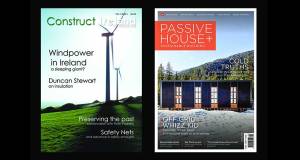 Podcast: what we've learned from 20 years in green building mags
Podcast: what we've learned from 20 years in green building mags -
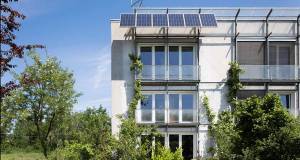 Passive house turns 30
Passive house turns 30 -
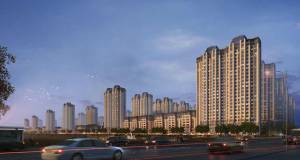 Passive House conference comes to China
Passive House conference comes to China -
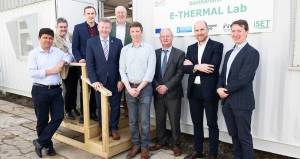 State-of-the-art heating test lab opens at GMIT
State-of-the-art heating test lab opens at GMIT -
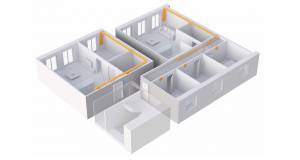 Fresh-r wins passive house component award
Fresh-r wins passive house component award -
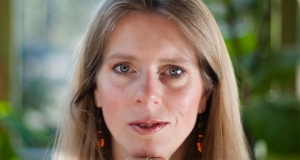 UN advocates passive house in latest carbon emissions report
UN advocates passive house in latest carbon emissions report -
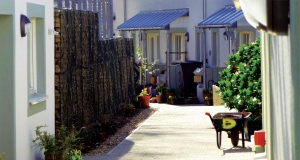 Lancashire housing scheme banks on passive
Lancashire housing scheme banks on passive -
 Victorian passive upgrade
Victorian passive upgrade -
 Seven projects receive international Passive House Award
Seven projects receive international Passive House Award -
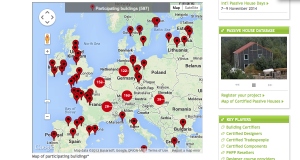 Looking back at this year's passive house days
Looking back at this year's passive house days -
 Irish passive house conference just ten days away
Irish passive house conference just ten days away -
 Passive house pioneer Wolfgang Feist to speak in Dublin
Passive house pioneer Wolfgang Feist to speak in Dublin


